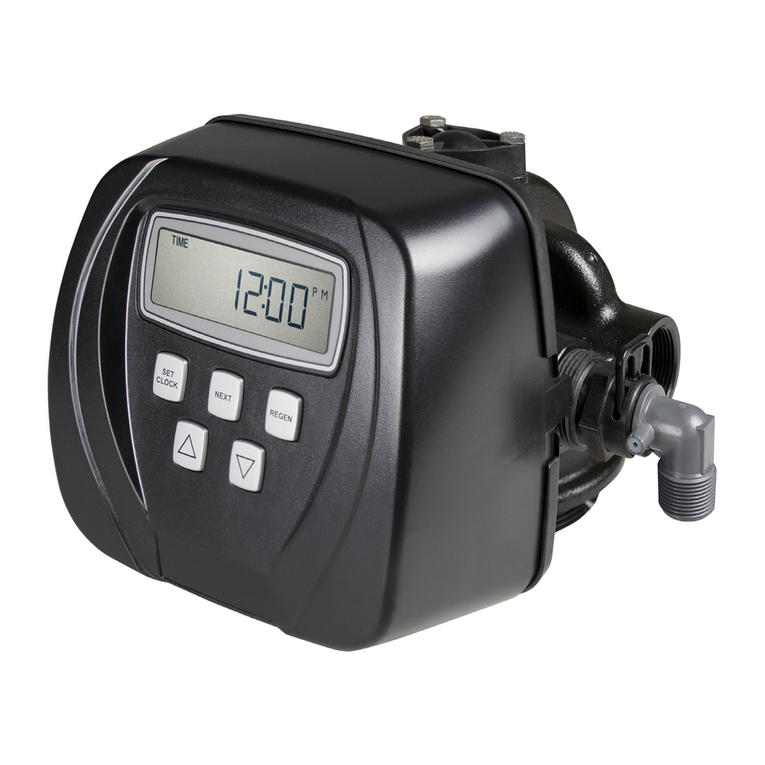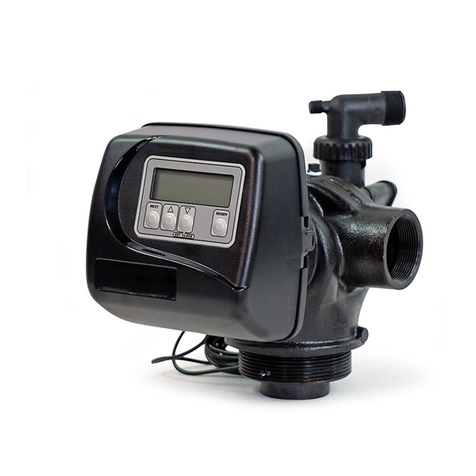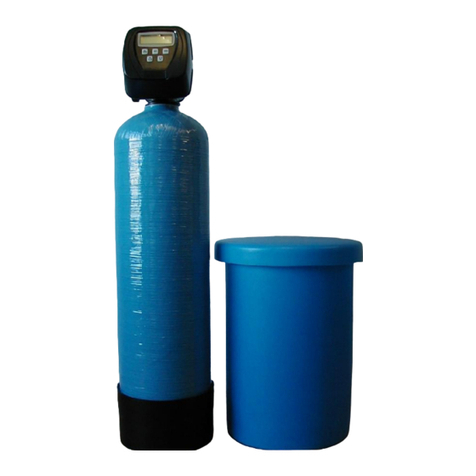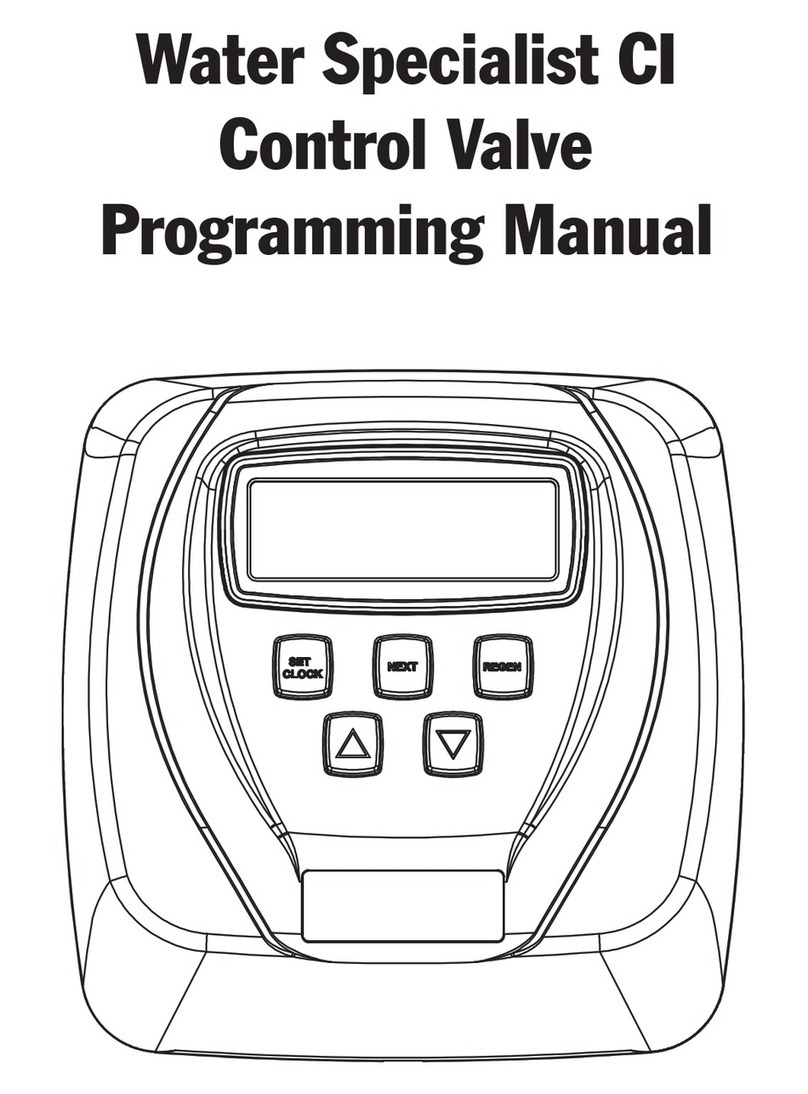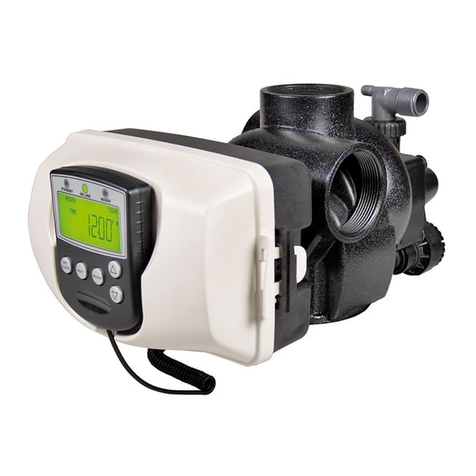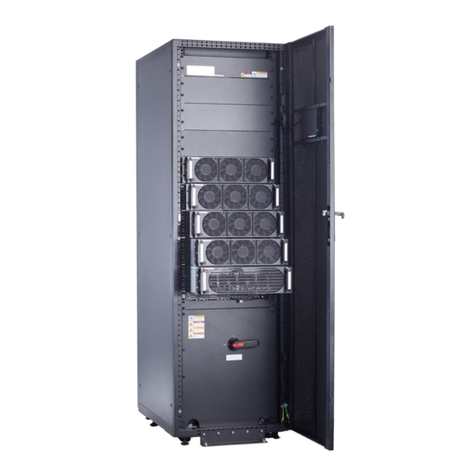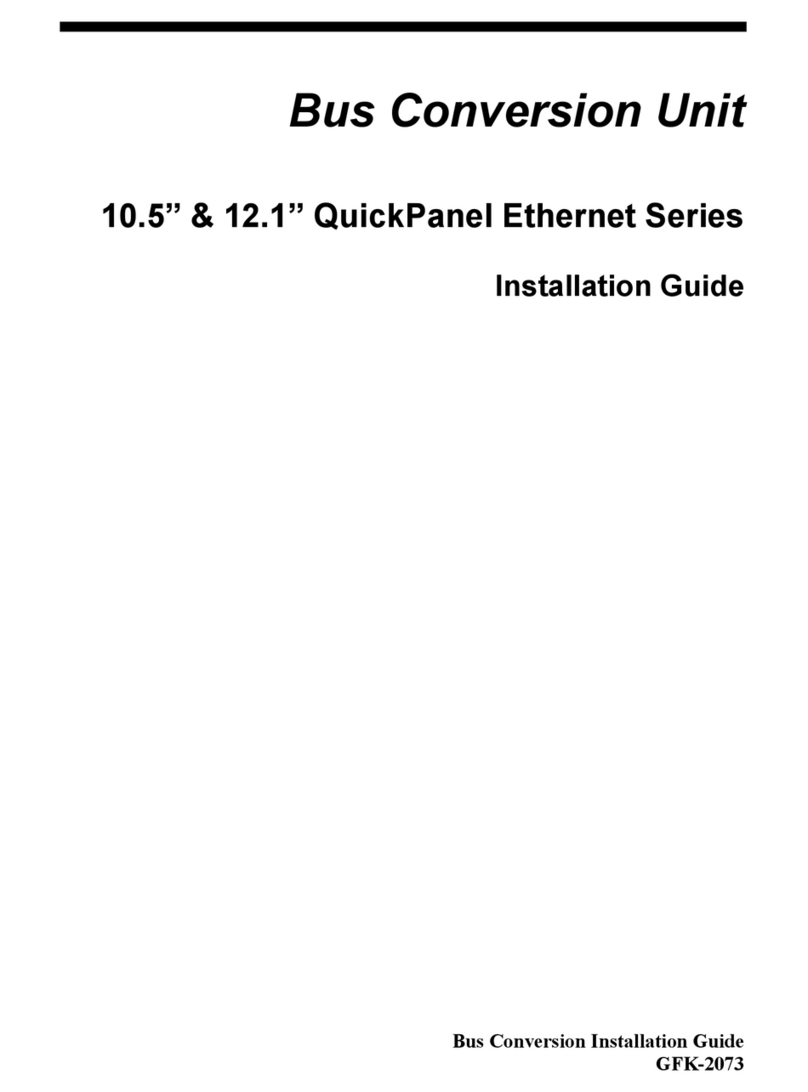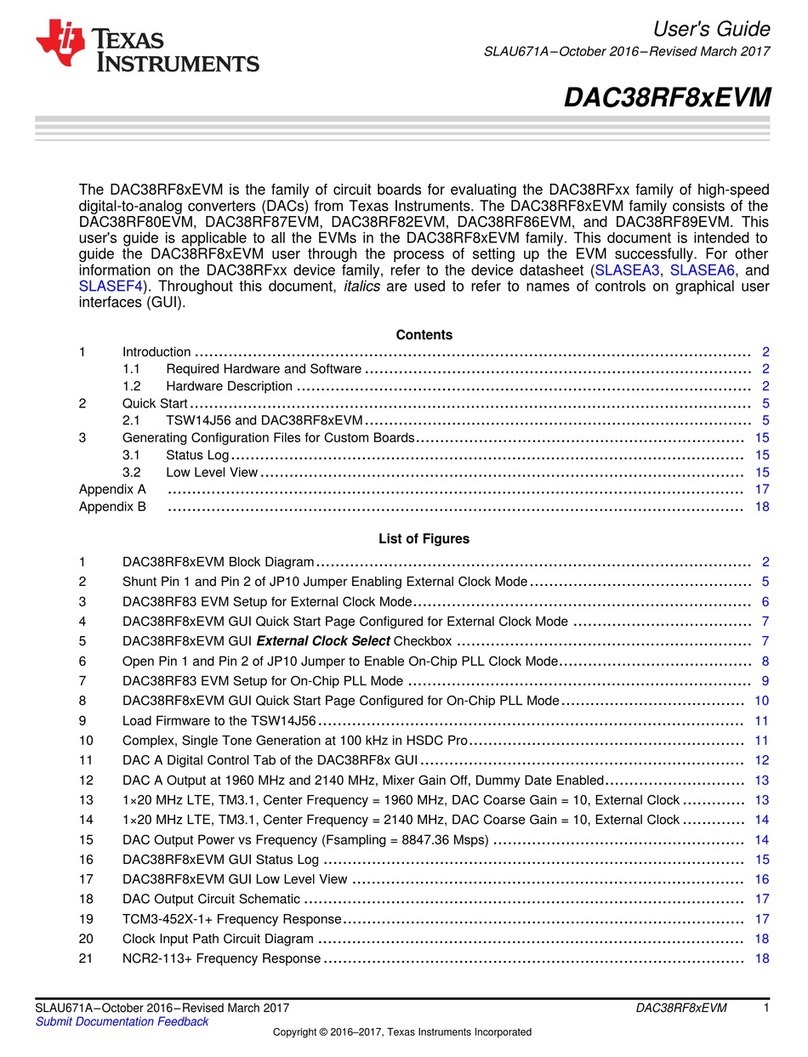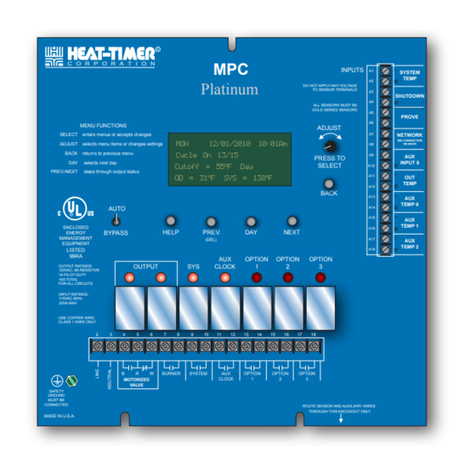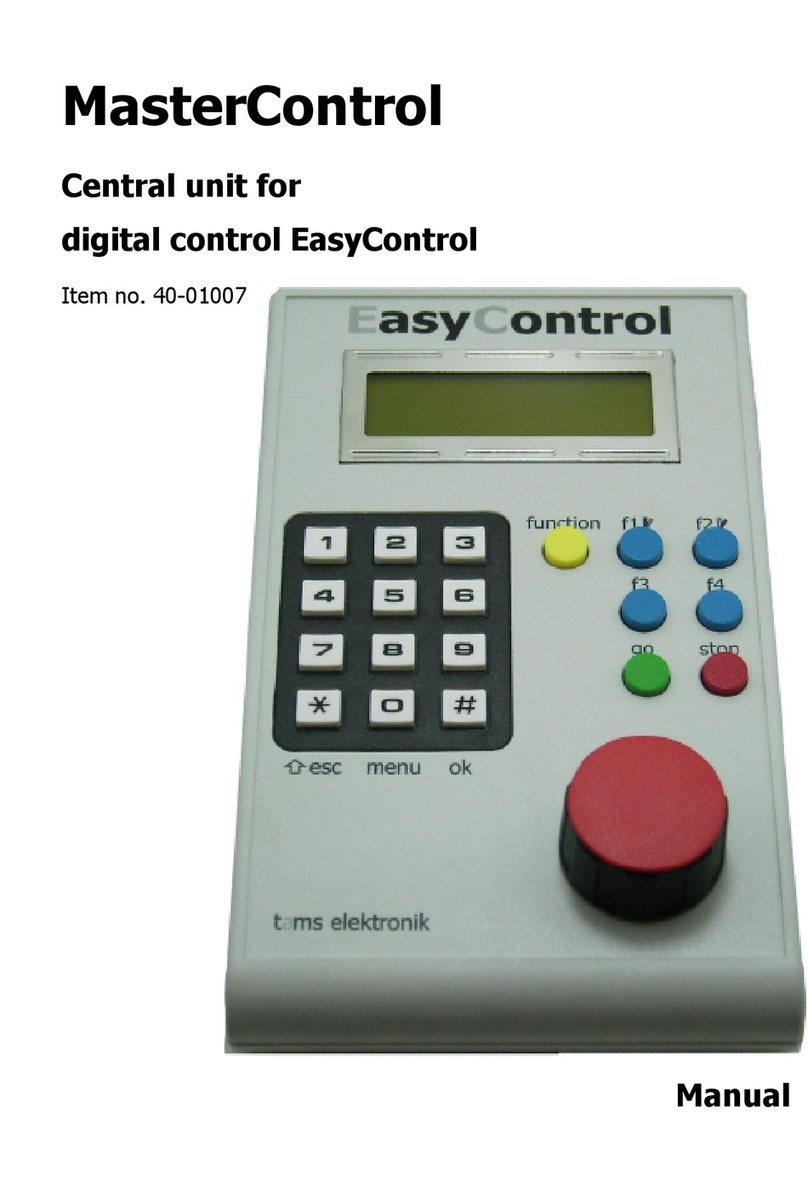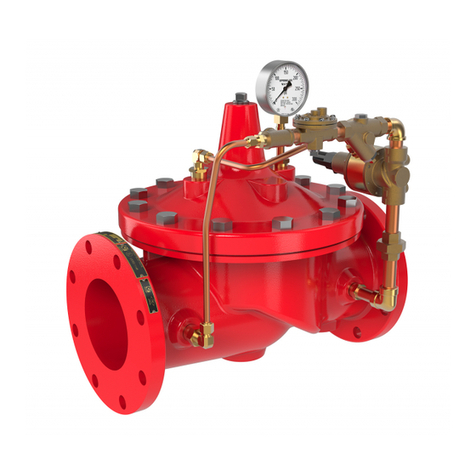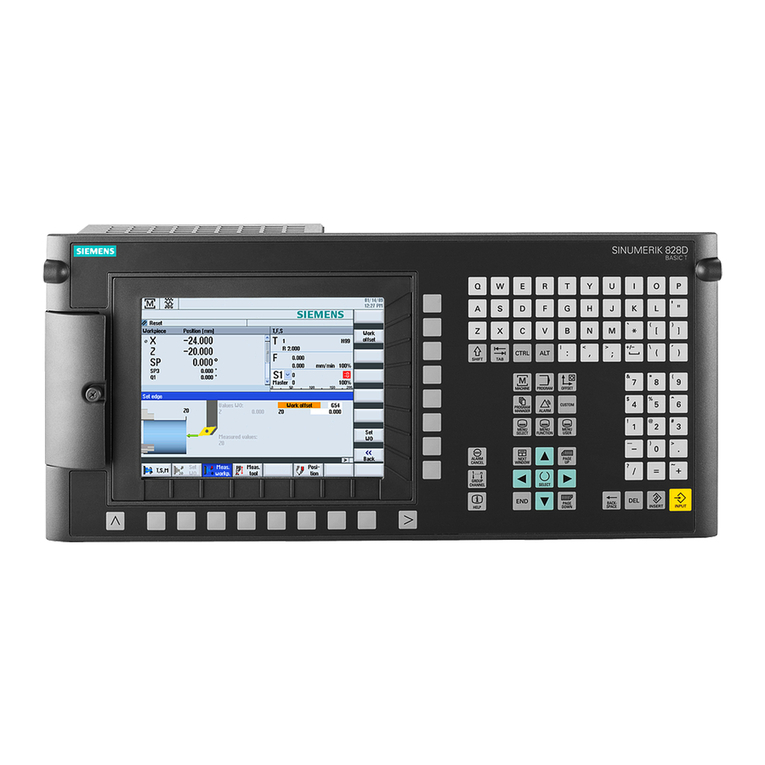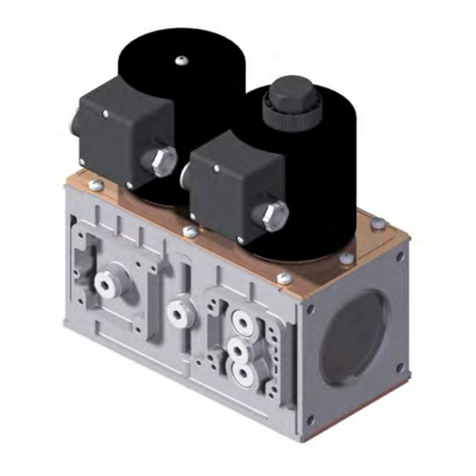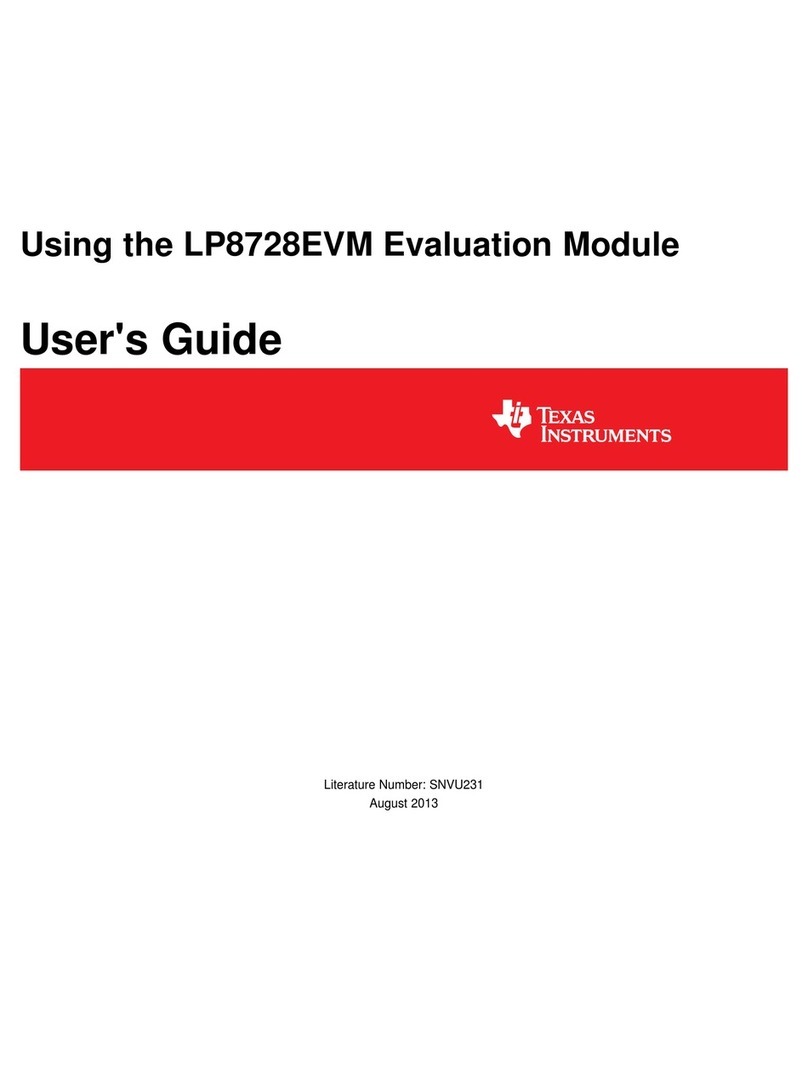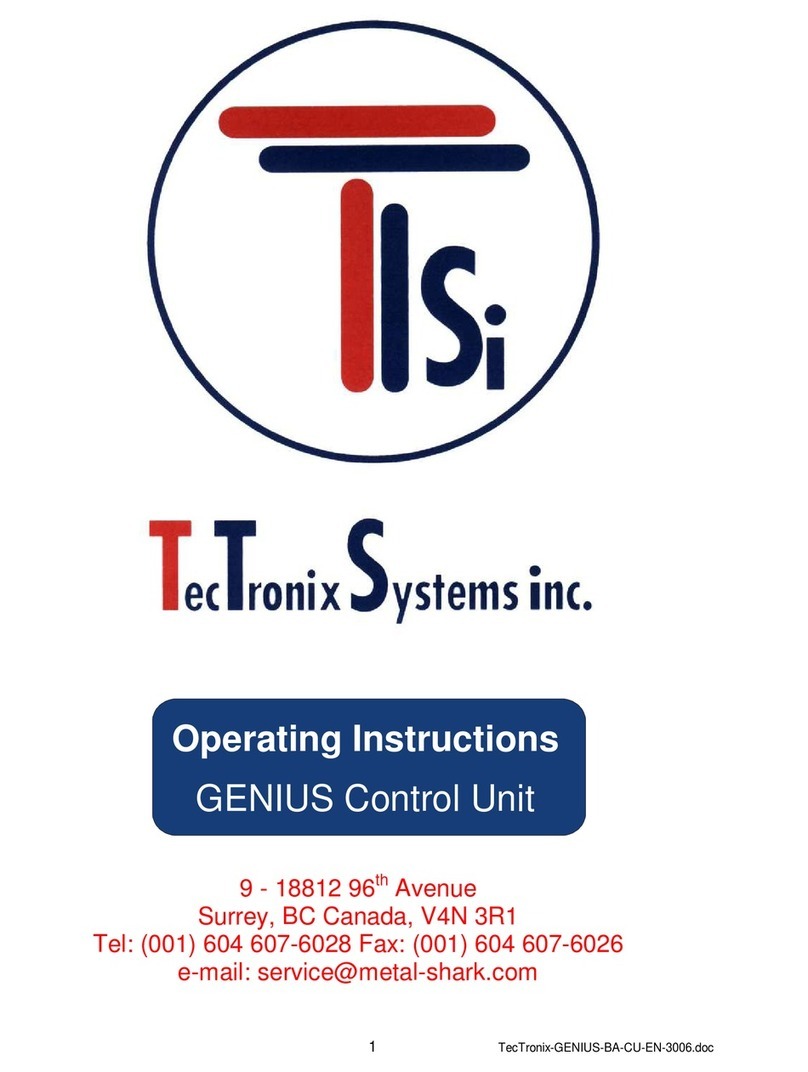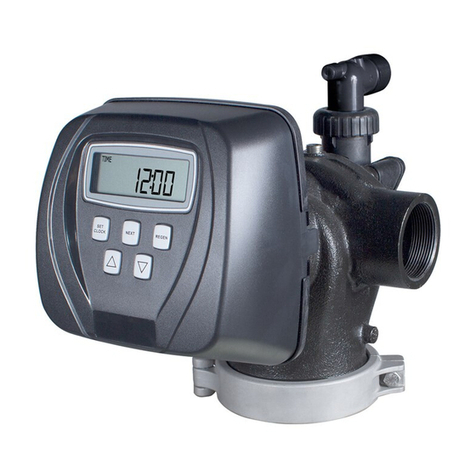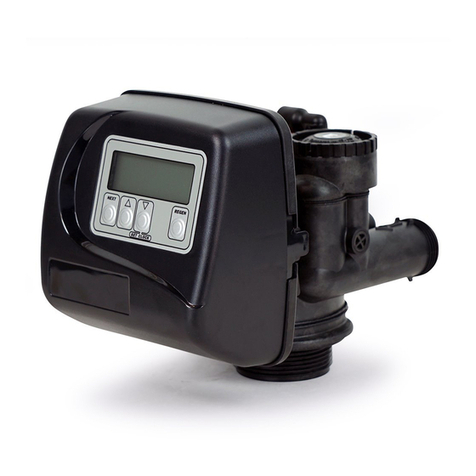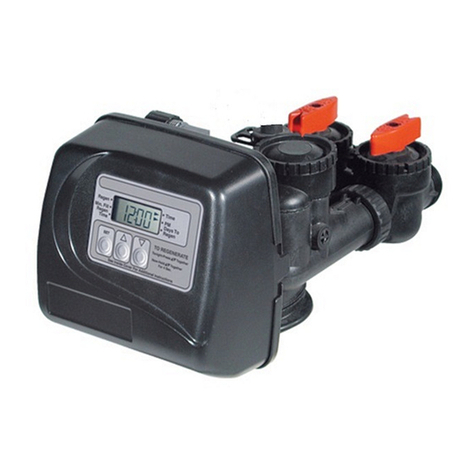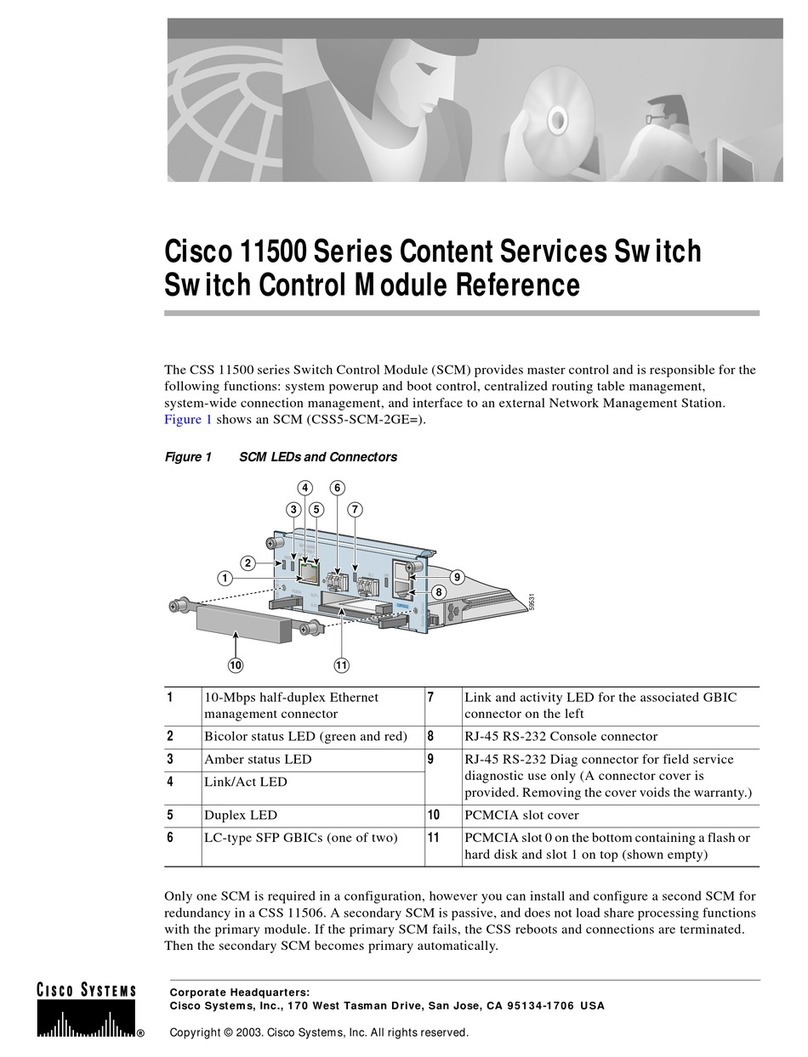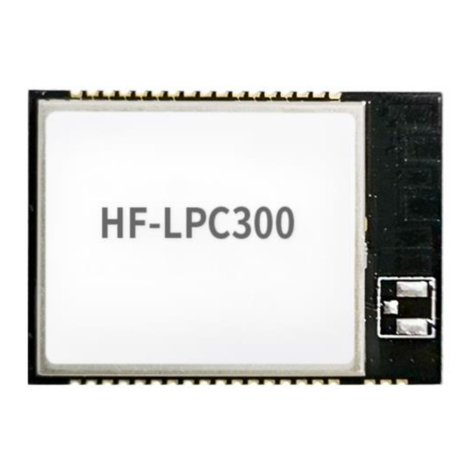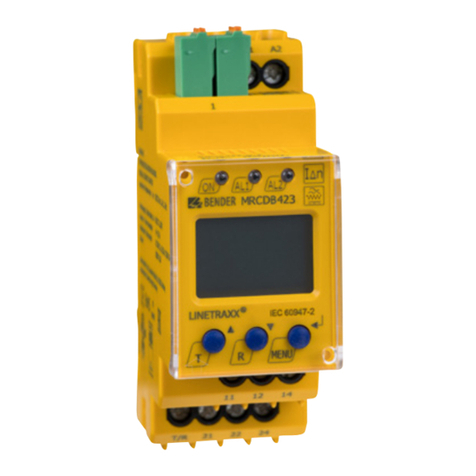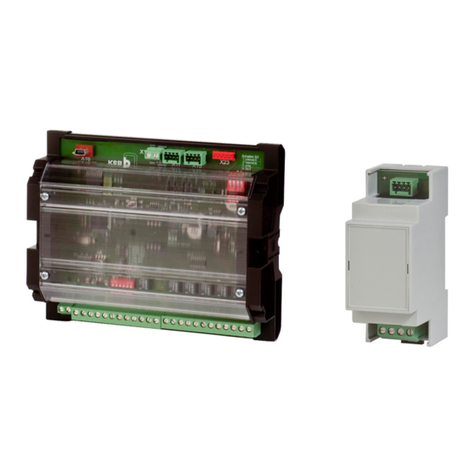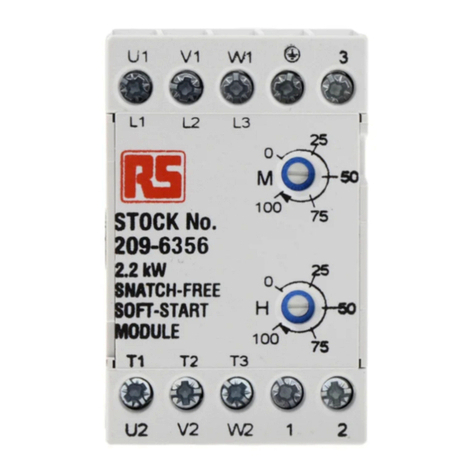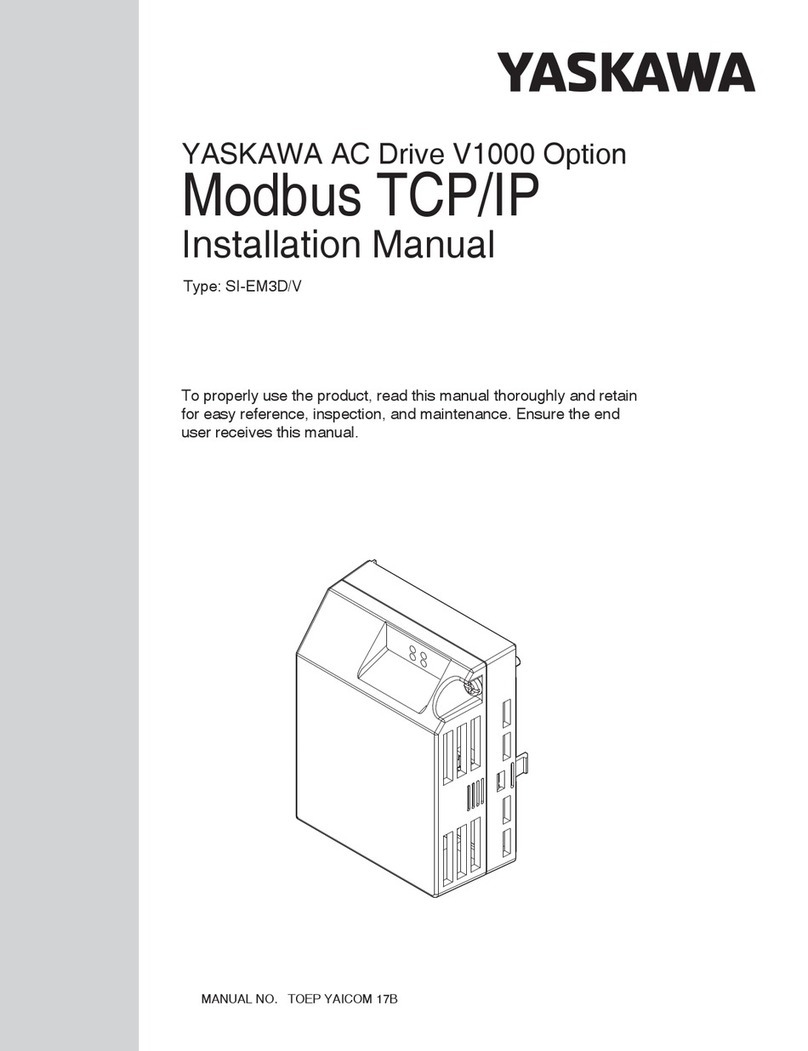Drive Assembly
Remove the valve cover to seems the drive assembly
Disconnect the power source plug (black wire) from the PC board prior to disconnecting the motor or
water meter plugs from the PC board. The motor plug connects to the two-pin jack on the left-hand side
of the PC board. The power source plug connects to the four-pinjack. The four-pinjack is between the
two-pin and three-pin jacks. The water meter plug (gray wire) connects to the three-pin jack on the far
right-hand side of the PC board.
The PC board can be removed separately from the drive bracket but it is not recommended. Do not
attempt to remove the display panel from the PC board. Handle the board by the edges. To remove the
PC board from the drive bracket, unplug the power, water meter and motor plugs from the PC board.
Lift the middle latch along the top of the drive bracket while pulling outward on the top of the PC board.
The drive bracket has two plastic pins that fit into the holes on the lower edge of the PC board. Once the
PC board is tilted about 45 from the drive bracket it can be lifted off of these pins. To reinstall the PC
board, position the lower edge of the PC board so that the holes in the PC board lineup with the plastic
pins. Push the top of the PC board towards the valve until it snaps under the middle latch, weave the
power and water meter wires into the holders and reconnect the motor, water meter and power plugs.
The drive bracket must be removed to access the drive cap assembly and pistons or the drive gear cover.
It is not necessary to remove the PC board from the drive bracket to remove the drive bracket. To
remove the drive bracket start by removing the plugs for the power source and the water meter.
Unweave the wires from the side holders. Two tabs on the top of the drive back plate hold the drive
bracket in place. Simultaneously lift the two tabs and gently ease the tap of the drive bracket towards
your body. The lower edge of the drive bracket has two notches that rest on the drive back plate. Lift up
and outward on the drive bracket to disengage
the notches.
To reassemble seat the bottom of the drive bracket so the notches are engaged at the bottom of the
drive back plate. Push the top of the drive bracket towards the two latches. The drive bracket may have
to be lifted slightly to let the threaded piston rod pass through the hole In the drive bracket Maintain a
slight engaging force on top of the drive bracket while deflecting the bracket slightly to the left by
pressing on the side of the upper right corner. This helps the drive gears mesh with the drive cap
assembly. The drive bracket is properly seated when it snaps under the latches on the drive back plate. If
resistance is felt before latching, then notches are not filly engaged, the piston rod is not in hole, the
wires are jammed between the drive bracket and drive buck plate, or the gear is not engaging the drive
cap assembly.
To inspect drive gears, the drive gear cover needs to be removed. The drive gear cover is held in place
on the drive bracket by three clips. The largest of the three clips is always orientated to the bottom of
the drive bracket. Before trying to remove the drive gear cover, the drive bracket must be removed from
the drive back plate. The drive gear cover can be removed from the drive bracket without removing the
motor or the PC board. Simultaneously, push in and down on the large clip at the bottom and the clip on
the left-hand side of the drive bracket behind the PC board. Keep your other fingers behind the drive
gear cover so the drive gears do not drop on the ground.





















